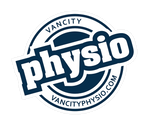Knee ligament tears, such as those affecting the ACL or MCL, are common injuries that can significantly hinder your mobility and daily activities. Physiotherapy plays a crucial role in recovery, helping individuals regain strength, stability, and function. In this blog, we’ll delve into how physiotherapy can aid in the rehabilitation process for knee ligament tears.
Understanding Knee Ligament Tears
Knee ligament tears occur when the ligaments that stabilize the knee joint are stretched or torn. These injuries can arise from sports activities, falls, or accidents. Common symptoms include pain, swelling, instability, and difficulty in movement.
The Importance of Physiotherapy
Physiotherapy is essential for recovering from knee ligament tears for several reasons:
-
Pain Management: Physiotherapists employ various techniques, including ice therapy, electrical stimulation, and manual therapy, to alleviate pain and reduce swelling.
-
Restoration of Range of Motion: Early rehabilitation focuses on restoring the knee’s range of motion. Physiotherapists guide patients through gentle stretching and mobility exercises to prevent stiffness.
-
Strengthening Muscles: As the knee heals, it’s vital to strengthen the surrounding muscles, such as the quadriceps and hamstrings. A physiotherapist will create a tailored strength training program that gradually increases in intensity.
-
Improving Stability: Stabilizing the knee is crucial, especially after a ligament tear. Physiotherapists use balance and proprioception exercises to enhance the body’s awareness of joint position, which is essential for injury prevention.
-
Functional Training: As recovery progresses, physiotherapists incorporate functional training to prepare patients for daily activities and sports. This may include sport-specific drills, agility training, and movement patterns to ensure a safe return to activities.
Physiotherapy Treatment Approaches
Initial Assessment
The rehabilitation process begins with a thorough assessment by a physiotherapist. They will evaluate:
- The extent of the injury
- Range of motion
- Strength and stability of the knee
- Pain levels
Treatment Phases
-
Acute Phase (0-2 Weeks):
- Goals: Reduce pain and swelling, protect the knee.
- Interventions: Ice therapy, rest, elevation, and gentle range-of-motion exercises.
-
Subacute Phase (2-6 Weeks):
- Goals: Restore range of motion and begin strength training.
- Interventions: Gradual increase in mobility exercises, isometric strengthening, and light resistance training.
-
Rehabilitation Phase (6-12 Weeks):
- Goals: Enhance strength, stability, and function.
- Interventions: Advanced strengthening exercises, balance training, and sport-specific drills.
-
Return to Activity Phase (3 Months and Beyond):
- Goals: Safe return to sports and daily activities.
- Interventions: High-level agility and plyometric training, functional movement patterns, and ongoing strength exercises.
Home Exercise Program
A key component of physiotherapy is a personalized home exercise program. Patients are encouraged to continue their rehabilitation exercises at home, which may include:
- Quadriceps and Hamstring Strengthening: Exercises like straight leg raises and hamstring curls.
- Balance Exercises: Standing on one leg or using a balance board.
- Stretching: Regular stretching to maintain flexibility in the knee and surrounding muscles.
Tips for a Successful Recovery
- Stay Consistent: Adhering to your physiotherapist’s recommendations and completing your home exercise program is vital for recovery.
- Listen to Your Body: Pay attention to pain levels and avoid pushing through severe discomfort.
- Communicate: Keep an open line of communication with your physiotherapist. Discuss any concerns or changes in your condition.
- Set Realistic Goals: Recovery takes time. Set achievable goals to stay motivated.
Conclusion
Physiotherapy is an integral part of the recovery journey following a knee ligament tear. With the guidance of a qualified physiotherapist, individuals can effectively manage pain, restore function, and regain strength in their knees. If you or someone you know is dealing with a knee ligament injury, consider consulting a physiotherapist to develop a tailored rehabilitation plan. By investing in physiotherapy, you can enhance your recovery and get back to the activities you love with confidence.

